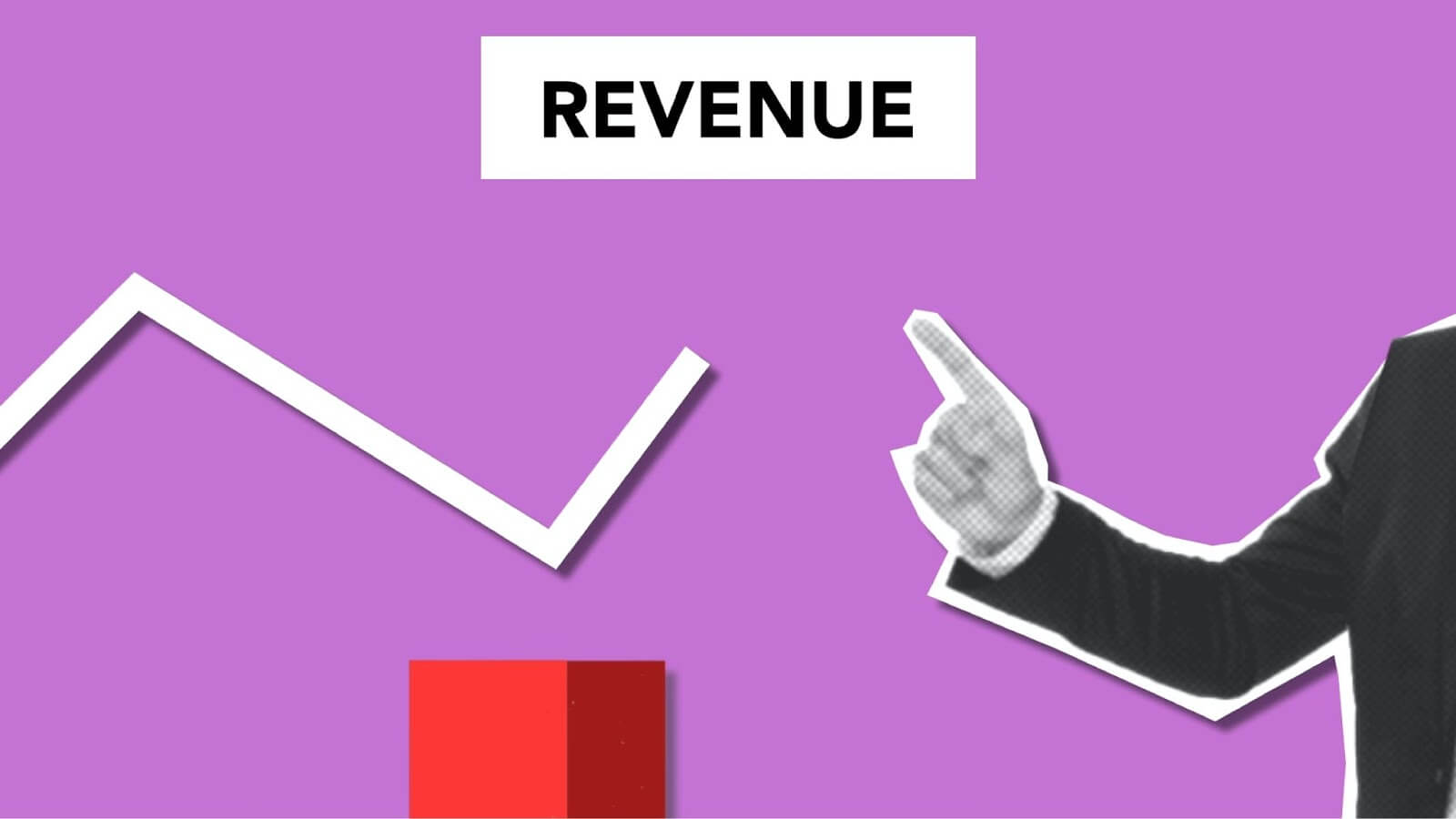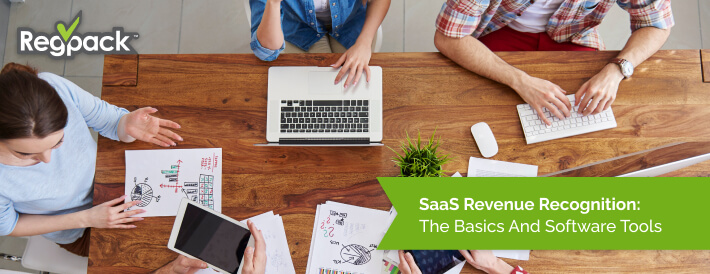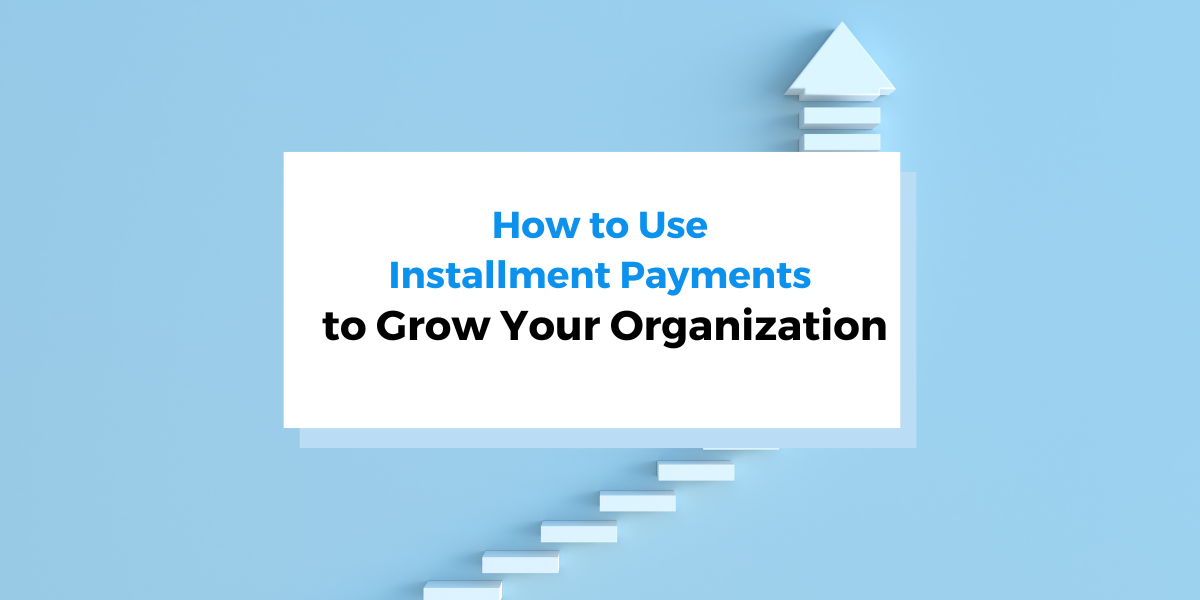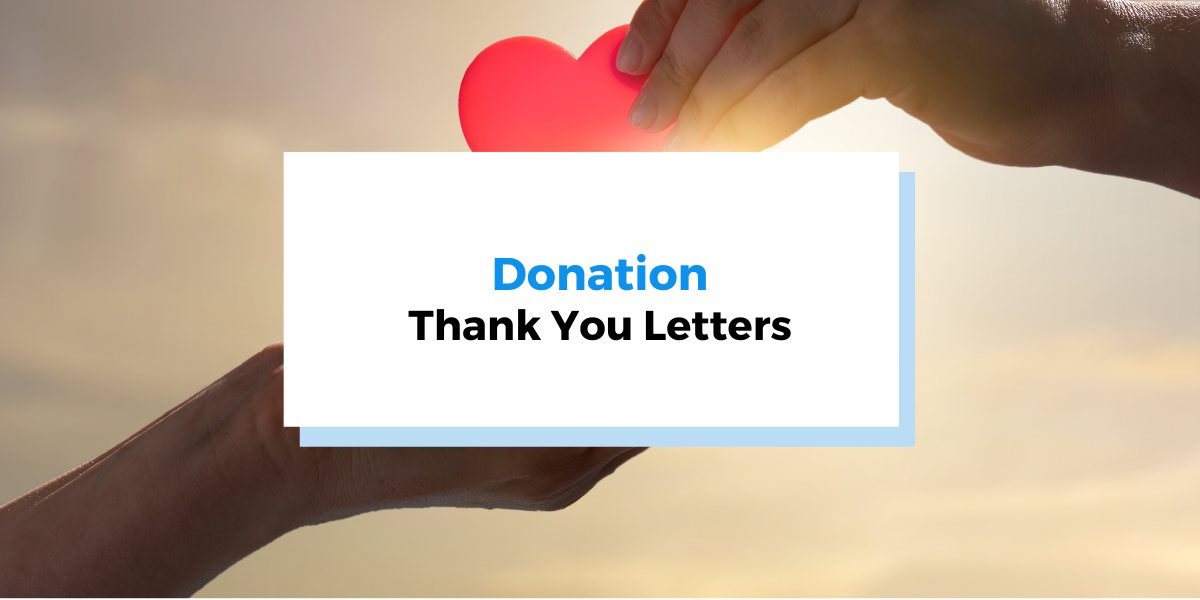Many tech startups find SaaS revenue recognition confusing, but it doesn’t have to be.
In this article, we’ll walk you through revenue recognition, why it’s so important, and the software you can use to process and organize your payment transactions immediately.
- What is Saas Revenue Recognition?
- Revenue Recognition and ASC 606
- Saas Revenue Recognition: Revenue Types and Complications
- Saas Revenue Recognition Software: Regpack
By gaining a good understanding of revenue recognition, you will be able to figure out revenues from contracts with your clients, produce accurate financial reports, and manage your profits in a way that works for you.

Don’t Limit Your Customer Pool!
Offer Multiple Payment Options Seamlessly
Another way of helping you to record and recognize revenue easily is by using a payment processor software like Regpack. It allows you to automate your payment or billing system so you can both process fees for subscription services and issue refunds immediately.
What is SaaS Revenue Recognition?

SaaS revenue recognition is an accounting method for reporting revenues by acknowledging the value of an up-front fee or an annual big contract over a period of time as it is earned.
If you’re selling software as a product, you might have customers who pay you up-front for a one-year contract, although they receive your services on a monthly basis.
But this is where subscription revenue recognition gets a bit confusing for many SaaS companies.
Before most software products migrated to the cloud, it was easier to convert cash from transactions into revenue. For example, a customer walks into a software store to buy the product they need, they go to the cashier and pay for the product, they’re then given the product, lastly, the customer can freely use it and return it within the refund period.
The up-front fee can be recognized as revenue right away. How? According to the Financial Accounting Standards Board (FASB), there are two conditions before your revenue could be recognized:
- The customer has the right to access and take control of the software.
- Customers are able to download and install the software on their own computing machines or hire a 3rd-party service provider to do it for them.
In the case of our example above, both stipulations required by the board were met. Therefore, the revenue from the sale of the software was recorded that month and was recognized as soon as the refund period was over.
Today, when a customer pays you a $1,200 up-front fee for a 12-month subscription service, that cash isn’t revenue until you have earned every last piece of it. So you’re only basically earning $100 per month over the period of 12 months with that customer.
Things have obviously changed since most software products moved to the cloud, which created nuances that made today’s subscription revenue recognition process different. More on this later.
Deferred Revenue
When a customer pays you in full one month or year in advance, that cash is not necessarily equal to the money in your bank account. The service hasn’t been fully provided yet, so what you have is what accountants call unearned or deferred revenue. That money only becomes earned revenue once you’ve fulfilled your promised service to your customer.
Subscription revenue recognition for Annual Plan sample
- Up-front fee/transaction price: $30,000
- Revenue recognized in the starting month (say June) will be $2,500
- Deferred revenue in June: $27,500
- Revenue recognized in July: $2,500
- Deferred revenue in June: $25,000
The list goes on until the contract has ended or the deferred revenue account holds zero balance.
Tracking your revenues can be quite challenging, especially if you have multiple contracts to take into consideration. That’s why we highly recommend using payment processors like Regpack that can account for revenue that’s processed immediately. This way, you’ll know how much money you’ve actually earned this month and determine whether you’ve got cash to use for paying salaries and expenses, and not accidentally use your deferred revenue.
Why Revenue Recognition Matters
People responsible for reporting finances to stakeholders need to calculate revenue and keep their account books straight to generate accurate financial statements that can also reflect the performance of the company. Otherwise, inaccurate revenue recognition will reflect badly on the company’s credibility and integrity, which might repel potential investors.
Plus, if a customer wants a refund, it’s easier to reverse cash flow if the revenue can be quickly located and accounted for. Make your cash flow predictable and reduce missed or late payments by using a recurring billing software.
Revenue Recognition and ASC 606

There are rules around how you should book and recognize SaaS revenue. Here’s what you need to know about this accounting principle and compliance to ASC 606 standards.
5-Step Model for SaaS Revenue Recognition
If a customer pays or signs up for your service, this means they officially enter into a contract with you to provide them with the goods or services they need. You are then required to comply with ASC 606 to adhere to the Generally Accepted Accounting Principles (GAAP).
ASC 606 laid out a 5-step model for SaaS businesses to follow before revenue can be recognized.
- Identify the contract terms with the customers.
- Identify the company’s performance obligations in the contract.
- Determine the transaction price.
- Allocate the transaction price to the performance obligations in the contract.
- Recognize revenue when the company satisfies performance obligations.
In a nutshell, ASC 606 standards require you to have a contract with your customers, a product or service to deliver, clear pricing, and product/service delivery terms. When the contract obligations are met and the refund period is over, only then you can book and recognize the revenue.
SaaS Revenue Recognition: Revenue Types and Complications

Some SaaS companies offer add-ons in multi-deliverable revenue arrangements. These typically include set up fees, consulting services, licensing, premium tech support services, and bundles and discounts.
SaaS revenue recognition can get even more complicated when you take these different revenue types into account. While consultancy services might be optional, others like set-up fees might be obligatory. How you recognize revenue from these additional services will be ascertained by whether any of these add-ons have any stand-alone value to the customer, as well as whether they are considered as “separate units of accounting”.
According to GAAP, multiple-element arrangements can be divided into separate units of accounting if any of the deliverables meet the following criteria:
- The delivered item (e.g., set-up fees, consultation services, etc.) must have stand-alone value. The delivered item has stand-alone value if it’s sold separately by any seller or could be resold by the customer.
- There’s reliable and objective evidence of the undelivered item’s fair value.
- If there’s a general right of return, performance or delivery of the undelivered item is considered probable and substantially in control of the seller.
Suppose you’re selling a $10,000 Business Intelligence (BI) software, and you require customers to pay an extra $2,000 for the one-time set-up service and customization.
If you do not offer these two items as separate services and they’re both mandatory for any new client, then they cannot be considered as separate units of accounting. Hence, the total transaction price should be inclusive of the set-up and customization fees. Although you might package and price them separately, both items are still part of the same service as far as revenue recognition is concerned.
Conversely, optional items like a 6-month consulting service is usually offered on a stand-alone basis. And the customer may opt or not opt to enter into a consulting contract with you, regardless of whether or not they’re using your software. This means this optional service would be considered as a separate unit of accounting, and thus, the revenue would be recognized separately from your software and other services.

Decrease Non-Payment By 75%
With Flexible Payment Plans!
Set-up Fees
Set-up fees are common in multiple-deliverable SaaS revenue arrangements. SaaS companies also often offer set-up fees as an obligatory, non-refundable one-time arrangement. And as soon as the set-up is completed, there would be no reason for the seller to do it again when a customer renews the contract one year later.
So in effect, the up-front fee is an advance payment for the future transaction processing services. The seller then sets the clear transaction price, which includes both the software and set-up fee as the same service, and recognizes revenue as they are delivered.
You can use an online billing software to customize the buying process for your customers, in which they can pay up-front for both the software and set-up fees. Benefit from payment reporting tools that can provide clarity on how those payments are allocated. These tools make it easy for you to determine and understand the revenue you’re making in your startup business.
Licensing
SaaS companies normally sell software either through term or perpetual licenses.
According to GAAP, revenues from term licenses are proportionately recognized over the licensing term, whereas revenues from perpetual licenses are recognized upon complete delivery of the software. Irrespective of the type of licensing, Post Contract Services (PCS) like software updates and maintenance are bundled together with the portion of the contract fee alloted to PCS and the revenue is recognized over the period that they’re delivered, which could be daily, weekly, monthly, and so on.
But under ASC 606, SaaS companies will have to identify whether the license is distinct from updates and maintenance in the multi-deliverable revenue arrangement. If yes, then the license and updates and maintenance would be considered separate units of accounting, regardless of the licensing.
To be considered separate items, a deliverable must meet the following criteria:
- The user can benefit from the license and the upgraded features individually. For example, a customer upgrades their software subscription plan from basic to business, in which they will have access to extra features like increased number of account administrators.
- The deliverables are distinct from one another within the context of the contract. For example, the user doesn’t need the upgraded features set for the licensed software to work and provide value.
Any additional features that changed the total contract price need to be factored in when recalculating the revenue recognition for coming weeks or months.
Learn how to invoice your customers professionally.
Consultation Services
As mentioned previously, consulting is one of the optional services that you can offer to customers. It is typically offered on a stand-alone basis and distinct from other services like set-up fees and software licensing, and thus considered a separate unit of accounting and revenue is recognized monthly over the contract term.
Since it’s common for consultation services to run on a subscription business model, late fees are quite a common issue. Avoid late fees and promptly recognize revenue from different services, from mandatory up-front fees to optional consulting services, with an online recurring payment solution.
Through this revenue recognition software, you can streamline customer payments, including monthly installments and enroll customers in an auto-billing program that will allow them to save time and keep a consistent payment schedule.
Bundles and Discounts
In many SaaS transactions, software products and IT services are bundled together and offered at a discounted price than their individual stand-alone selling prices.
For example, you enter into a contract to sell your customer business intelligence software and consulting services for $13,000 and you want to give a $100 discount. The stand-alone selling price of each deliverable are $10,000 and $3,000. The customer receives a $100 discount for purchasing the two items as a package. The customer can use the software right away while the consulting service will be delivered monthly; every 15th of the month over a 6-month period.
To recognize revenue, let’s divide $10,000 (software’s stand-alone selling price) by $13,000 (total contract price) and multiply the dividend by 100, which is equal to $76.9. Next, divide $3000 (consulting service price) by $13,000 and multiply the dividend by 100, which gives you $23.1. Therefore, the customer shall receive a $100 discount for the bundle.
On the day of purchase and delivery of first consultation, you would recognize $10,419.25 of revenue. This consists of the $10,000 BI software minus the $76.9 discount and the first month of consultation which is around $496.15 ($3,000 minus the $23.1 discount divided by 6). So for the next 5 months, you would recognize $496.15 monthly revenue from your consulting service.
Learning how to allocate your discounts to your products/services efficiently can help you recognize your monthly revenue better. Once you figure out how to allocate discounts properly, consider using a customizable online billing software to create and trigger discounts automatically. You can set up a percentage-based discount or monetary discount and let the software automatically calculate the offer into the customer’s balance. This way, no customer has to second-guess if the discount was applied.
SaaS Revenue Recognition Software: Regpack

Regpack is an online mass registration software with integrated payment processing. It allows your SaaS businesses to create a custom onboarding process to manage clients and members, accept online payments on your website, and have a 360-degree view of their revenue, cash flow, and insights into customers.
Regpack is good for SaaS revenue recognition purposes because of the following reasons:
- Customize payment forms. If you have a lot of deliverables on offer, you can build a custom payment form for each, as well as personalize the registration flow for different types of customers. Custom payment forms also make it easy for you to organize your financial transactions and statements. For example, potential consultation clients will appreciate a registration process that’s unique to their needs. You can easily remove questions or illogical processes that aren’t relevant to customers signing up for a 6-month consultation with you. If the customer would like to arrange a group consultation, allow one person to register multiple people easily. You can easily account revenue for this type of service with customized payment forms.
- Secure and receive timely payments. Timely payments are important in calculating your monthly revenue accurately. So make sure that you give your customers an option to subscribe to a billing system that automatically renews their contract with you. Regpack has the tools that you need to collect and store payment details securely, charge customers on customized recurring schedules, and create and organize automatic payment plans.
- Create and automatically apply discounts or coupon codes. A lot of SaaS companies bundle their services together at a lower price to attract more customers. With Regpack, you can easily build and apply discounts automatically.
- Run sales and payment reports on a single platform. Make accounting easy with Regpack’s sales and payment reporting tool. You can easily filter data to find the transactions you want to see, such as all payments, payments for a specific group of customers, payments tied to a specific product or service, or payments made in a specific date range. You can also customize the sales and payment reports however you want. These reports include:
- Transaction ID
- Payment method used
- Status
- System remarks
- Payment allocation
- Payee information
With Regpack, it will be easy for you to determine the revenue you’re making in your business, and the real-time amount of income generated by your offers.

Accept Payments Online, Right On Your Website!
Streamline your checkout process, offer payment plans, and more!
Conclusion
Any business that collects payment from customers up front should adhere to the rules around SaaS revenue recognition. It can seem a bit confusing at first, but the rule is really simple – offer a software product or service that can provide value to your customers and deliver on your promise. Only then you’ll be rewarded with revenue. Be sure to measure, record and report revenue as it’s a crucial data point for your business. Steady revenue growth indicates that your company is performing well, which is great for attracting investors.
Sign up for a free demo and let us help you streamline your revenue streams in a single SaaS revenue recognition solution.


















